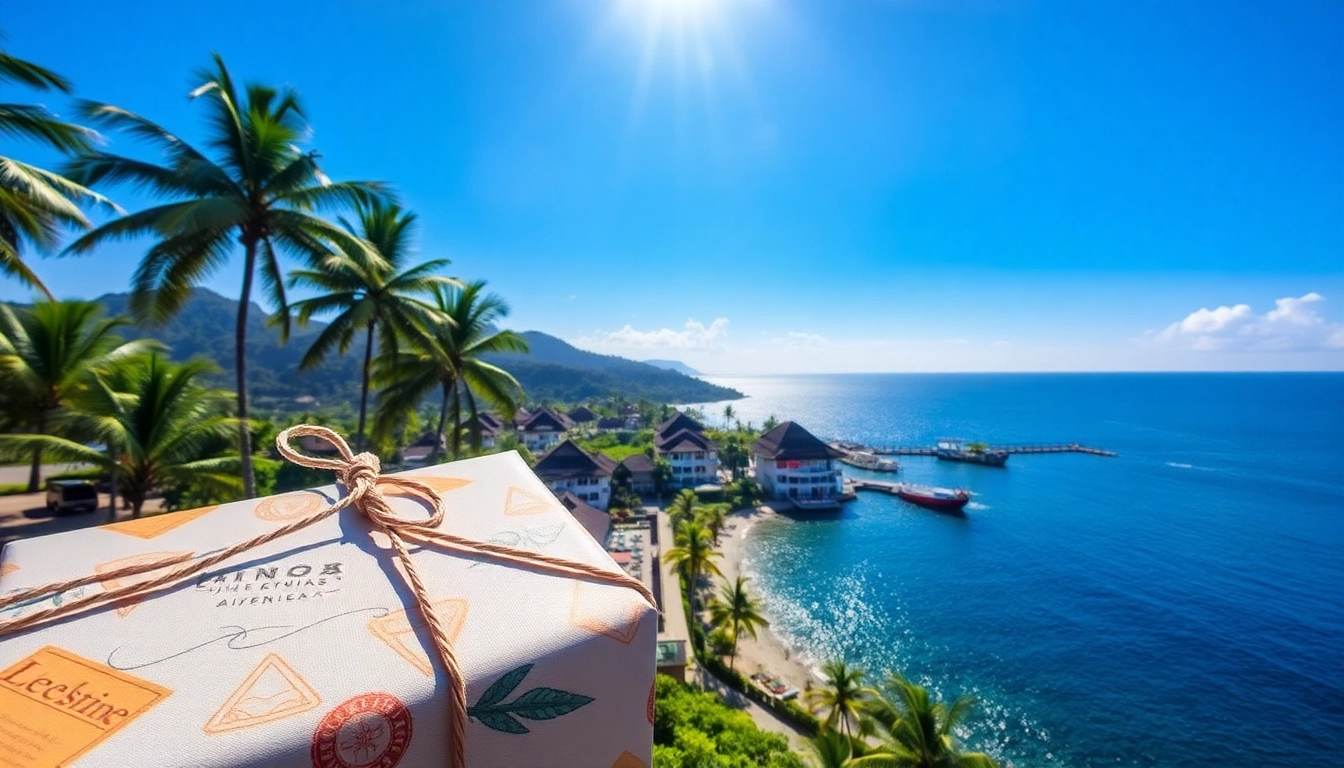
Introduction to Mount Rinjani
Nestled on the enchanting island of Lombok in Indonesia, Mount Rinjani stands as one of Southeast Asia’s most iconic and awe-inspiring volcanic landmarks. As Indonesia’s second-highest volcano, it draws thousands of adventure seekers, nature lovers, and cultural enthusiasts each year. The mountain’s towering presence, with an elevation of 3,726 meters (12,224 feet), makes it a formidable yet inviting destination for hikers and explorers alike. Its significance extends beyond its majestic height; Rinjani is a natural wonder, a cultural emblem, and a vital ecological sanctuary that embodies the diverse beauty of Lombok.
More than just a mountain, Rinjani plays an integral role in local traditions and Indonesia’s geological history. Its active volcanic nature has shaped the island’s landscape over millennia, creating unique landforms like crater lakes, hot springs, and lush forests. The challenge of reaching its summit is rewarded with panoramic views, mystical crater vistas, and an intimate encounter with nature’s raw power. Whether you are a seasoned trekker looking for a demanding adventure or a traveler seeking a profound cultural experience, Mount Rinjani offers a journey unlike any other.
Natural Features and Unique Landscape
Volcanic Activity and Crater Lake
Mount Rinjani’s status as an active volcano makes it a geological marvel. The volcano’s last significant eruption occurred in 2016, reminding visitors of its dynamic nature. Central to its allure is Segara Anak, a stunning crater lake that sits within the caldera, approximately 200 meters deep and enveloped by volcanic ridges. The lake’s emerald waters reflect the shifting moods of the volcano, creating a mystical ambiance. Once a major contributor to the island’s landscape, this caldera and lake system have become a focal point for both scientific study and spiritual reflection.
The volcanic activity has led to a diverse array of landforms, including hot springs and fumaroles, which offer natural geothermal baths and a glimpse into the mountain’s subterranean processes. These features are not only spectacular but also provide valuable insights into the ongoing geological activity beneath the surface.
Flora and Fauna within Rinjani National Park
The mountain is part of the Gunung Rinjani National Park, a UNESCO-recognized biosphere reserve that spans over 41,000 hectares. The park’s rich biodiversity accounts for numerous endemic and exotic species. Dense tropical rainforests, montane forests, and alpine scrub thrive at different elevations, creating a layered ecosystem that supports a variety of wildlife.
Visitors may encounter species like the Lombok monkey, Sumatran tiger, and various bird species, including hornbills and eagles. The plant life ranges from lush ferns and orchids to high-altitude mosses and lichens, adapting uniquely to the challenging slopes. Conservation efforts continue to protect this ecological treasure amidst increasing tourism.
Scenic Views and Photogenic Spots
The landscape of Mount Rinjani is a photographer’s paradise. Sunrise views from the summit reveal sweeping vistas of Lombok’s rolling hills, neighboring islands, and the vast Indian Ocean. The crater rim offers breathtaking outlooks, while waterfalls like Sendang Gile and Tiu Kelep provide tranquil photo opportunities amidst lush greenery.
The area’s diverse scenery—from volcanic craters and hot springs to verdant forests—ensures every turn of the trail offers a new, captivating perspective. The scenic beauty of Mount Rinjani is both inspiring and humbling, leaving a lasting impression on all who visit.
Planning Your Rinjani Trekking Adventure
Best Time to Visit and Weather Conditions
The optimal period for trekking Mount Rinjani is during the dry season, which typically runs from April to October. During these months, the weather is characterized by clear skies, minimal rainfall, and favorable temperatures, making the ascent safer and more enjoyable. The rainy season, from November to March, is less suitable due to muddy trails, landslides, and frequent storms that can hinder movement and safety.
It is crucial to check current weather alerts and volcanic activity reports before planning your trip, as the mountain’s active status can lead to sudden eruptions or ash clouds that may affect your safety.
Required Equipment and Preparation Tips
Climbing Mount Rinjani demands proper gear and physical preparation. Essential equipment includes sturdy hiking boots, warm layered clothing (including windproof and waterproof jackets), a good quality sleeping bag, headlamp, high-energy snacks, personal medications, and a valid trekking permit. Since temperatures can drop significantly at higher altitudes, prepare for cold conditions with thermal wear.
Physical fitness is vital; hikers should engage in cardiovascular and strength training exercises beforehand. Acclimatization is key to prevent altitude sickness, so consider spending a night at the base camp before attempting the summit.
Popular Routes and Difficulty Levels
The two main trekking routes are the Sembalun Route and the Senaru Route. Both are well-marked and accessible, but they differ in difficulty and scenery:
- Sembalun Route: Known for its gradual incline and stunning landscapes of the savannah, this route is approximately 27 km round-trip. It typically takes 2-3 days to complete, with breathtaking sunrise views from the summit.
- Senaru Route: Offers a more challenging ascent through lush rainforests, often favored by experienced trekkers. This route is about 17 km but includes steeper sections and requires more technical skills.
Choosing the right route depends on your fitness level, experience, and preferred scenery. Guided tours often include logistical support, permits, and safety measures, ensuring a smoother trekking experience.
Guides, Permits, and Safety Guidelines
Finding Qualified Guides and Tour Packages
To navigate Rinjani’s challenging terrain, hiring an experienced guide is highly recommended. Reputable tour operators in Lombok offer packages that include permits, equipment, accommodations, and safety measures. Guides are well-versed in volcanic activity, weather conditions, and local customs, providing not only navigation but also insightful cultural and geological commentary.
Look for guides certified by the local authorities or recognized adventure tourism associations. Personal recommendations and online reviews can help identify trustworthy operators. Group trekking options are popular for safety, cost-effectiveness, and camaraderie.
Permits and Regulations for Climbing Rinjani
Climbing Mount Rinjani requires a permit issued by the Rinjani National Park authority. These permits control the number of visitors, help protect the environment, and ensure safety. Visitors typically need to apply in advance or through authorized agencies. Fees vary depending on the route, duration, and whether you book through a tour operator.
It is essential to adhere to park regulations, including designated camping zones, waste disposal rules, and respecting wildlife. Unauthorized climbs or littering can result in hefty fines or legal action.
Important Safety Tips for Trekkers
Safety should always be a priority. Key tips include:
- Check volcanic activity updates before your hike.
- Always carry sufficient water and high-energy snacks.
- Dress in layers to adapt to temperature changes.
- Listen attentively to your guide’s instructions.
- Be prepared for sudden weather shifts—carry rain gear and warm clothing.
- Be cautious on steep, rocky, or slippery sections, especially at dawn or dusk.
- Know the symptoms of altitude sickness and ascend gradually.
Experiencing the Culture and Local Hospitality
Local Lombok Cuisine and Cultural Sites
After the rigorous trek, immerse yourself in Lombok’s rich cultural tapestry. The local cuisine features seafood delicacies like grilled fish, spicy sambal, and traditional dishes such as Ayam Taliwang and Plecing Kangkung. Visiting local villages offers insights into Sasak traditions, handicrafts, and spiritual practices.
Cultural sites near Rinjani, including ancient temples and traditional Sasak villages, provide authentic interactions and deepen your understanding of the island’s heritage. Participating in local ceremonies or markets enriches your travel experience.
Community Initiatives and Eco-Tourism
Many local communities actively promote sustainable tourism, encouraging eco-friendly practices and conservation efforts. Support community-run homestays, clean-up programs, and educational initiatives to help preserve Rinjani’s natural beauty while benefiting local livelihoods. Responsible tourism ensures the mountain remains pristine for future generations.
Memorable Experiences beyond the Mountain
Beyond summiting, explore Lombok’s pristine beaches, waterfalls, and snorkeling spots. Engage in cultural tours, island hopping, or traditional weaving workshops. These additional activities complement your journey, making your adventure comprehensive and unforgettable.



